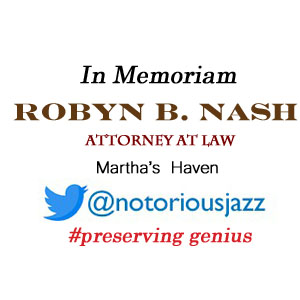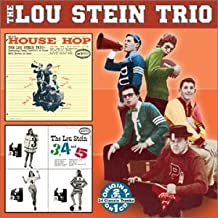
Daily Dose Of Jazz…
Lou Stein was born on April 22, 1922 in Philadelphia, Pennsylvania and joined Ray McKinley’s band in 1942. He played with Glenn Miller when the latter was stateside during World War II.
After the war he worked with Charlie Ventura from 1946 to 1947 and became a session musician. He performed with the Lawson-Haggart Band, Benny Goodman, Sarah Vaughan, the Sauter-Finegan Orchestra, Louie Bellson, Red Allen, Coleman Hawkins, and Lester Young.
Recording as a bandleader, in 1957 he had a U.S. Top 40 hit with Almost Paradise, as well as a Top 60 hit with his cover version of Got a Match the following year. From 1969 to 1972 he played with Joe Venuti.
Pianist Lou Stein passed away on December 11, 2002.
More Posts: bandleader,history,instrumental,jazz,music,piano
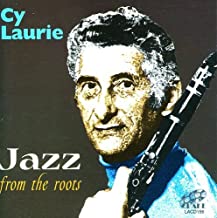
Daily Dose Of Jaz…
Cyril Laurie was born on April 20, 1926 in London, England of Latvian/Jewish immigrant stock. A self-taught clarinetist he put together a band in 1947. George Melly debuted in this ensemble in 1948. He played with Mike Daniels in 1949-50 and led the Cy Laurie Four in 1950 with Fred Hunt and Les Jowett.
He ran his own club in Windmill Street, Soho, London from 1951 and headed a seven-member ensemble with Chris Barber, Alan Elsdon, Al Fairweather, Graham Stewart and Colin Smith. Cy Laurie’s Club was in a basement in Ham Yard in Great Windmill Street, opposite the Windmill Theatre.
Quitting music from 1960 to 1968, he travelled to India to study meditation with the Maharishi Mahesh Yogi. Returning in 1968 to lead another ensemble at the end of the decade his career saw a resurgence late in the 1970s. He toured in ensembles as a soloist and sometimes led his own groups. Cy played with Eggy Ley and Max Collie in the 1980s. He continued performing into the 1990s. In 1996 to celebrate his 70th birthday he put together a celebratory reunion gig at London’s 100 Club.
Clarinetist Cy Laurie, who was a leading figure in the post 1945 Trad Jazz boom in the UK, passed away on April 18, 2002 at the age of 75 in Stapleford Abbotts, Essex, England.
More Posts: bandleader,clarinet,history,instrumental,jazz,music
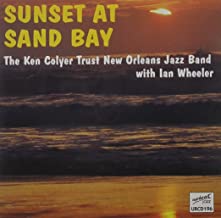
Daily Dose Of Jazz…
Kenneth Colyer was born on April 18, 1928 in Great Yarmouth, Norfolk, England, but grew up in Soho, London, and served as a member of his church choir. Listening to his elder brother’s jazz records which influenced him. He joined the Merchant Navy at 17, travelled around the world and heard famous jazz musicians in New Orleans, Louisiana.
In the UK, Colyer played with various bands and joined the Crane River Jazz Band in 1949 with Ben Marshall, Sonny Morris, Pat Hawes, John R. T. Davies, Julian Davies, Ron Bowden and Monty Sunshine. Rejoining the Merchant Navy, and jumping ship in Mobile, Alabama, he travelled to New Orleans, where he played with his idols in George Lewis’ band. Though offered the job of lead trumpeter on a tour, he was caught by the authorities, detained and deported.
Ken went on to join the Chris Barber Band and made their first recordings on the Storyville in 1953. Parting company the following year, then briefly joined a band in the mid-1950s with clarinetist Acker Bilk and trombonist Ed O’Donnell.
Then he put together his own band with Mac Duncan, Ian Wheeler, Johnny Bastable, Ron Ward, Colin Bowden and Ray Foxley. This band played together until the early 1960s before incorporating a new lineup.
After a bout with stomach cancer in 1972 he stopped being a bandleader but continued to work, occasionally associated with Chris Blount’s New Orleans Jazz Band. A biography, Goin’ Home, was compiled by Mike Pointon and Ray Smith. Trumpeter and cornetist Ken Colyer, who was known for skiffle interludes and devoted to New Orleans jazz, passed away on March 8, 1988.
More Posts: bandleader,cornet,history,instrumental,jazz,music,trumpet
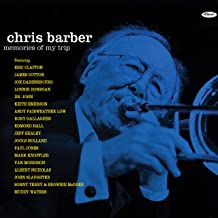
Daily Dose Of Jazz…
Chris Barber was born Donald Christopher Barber in Welwyn Garden City, Hertfordshire, England on April 17, 1930. He started learning the violin when he was seven years old, got his education at Hanley Castle Grammar School, Malvern, Worcestershire, to the age of 15, where he started to develop an interest in jazz. After the end of World War II, he attended St Paul’s School in London, and began visiting clubs to hear jazz groups. He then spent three years at the Guildhall School of Music, and started playing music with friends.
The 1950s saw Barber forming the New Orleans Jazz Band, with him on double bass, playing both trad jazz and blues tunes. By 1952 he became a professional musician. With clarinetist Monty Sunshine they formed a band in later that year, and began playing in London clubs, accepting an offer to play in Denmark in early 1953, making its debut in Copenhagen. The bands played Dixieland jazz, and later ragtime, swing, blues and R&B and the band became The Chris Barber Band.
In the late 1950s and early 1960s, Barber was mainly responsible for arranging the first UK tours of blues artists which would spark the British invasion of the U.S. charts in the 1960s. Stunning traditionalists in 1964, he introduced blues guitarist John Slaughter into the line up. This eleven-man “Big Chris Barber Band” offered a broader range of music including Duke Ellington, while reserving a spot in the programme for the traditional six-man New Orleans line-up.
He published his autobiography Jazz Me Blues in 2014, with co-author Alyn Shipton. He retired in 2019 after some 70 years of performing, with an OBE to his credit for services to music, an honorary doctorate from Durham University, and awarded the Blues Louis for his services to popularizing the blues in Europe, and the German Jazz Trophy.
Trombonist Chris Barber, who suffered from dementia in the period before his death, passed away on March 2, 2021 at 90.
More Posts: bandleader,history,instrumental,jazz,music,trombone
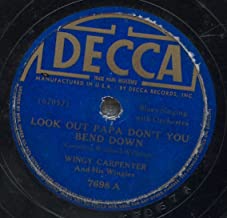
Daily Dose Of Jazz…
Theodore “Wingy” Carpenter was born on April 15, 1898 in St. Louis, Missour. Losing his left arm as the result of an accident during his early teens, the amputation was performed by a noted surgeon who was an uncle of jazz musician Doc Cheatham. Sometime later, he took up the trumpet and by 1920 he was working in traveling carnival shows. In 1921 he toured with Herbert’s Minstrel Band.
By 1926 he had settled in Cincinnati, Ohio, where he worked with Wes Helvey, Clarence Paige, Zack Whyte, and Speed Webb. In 1927, he played in Buffalo, New York, with Eugene Primus. Off and on from late 1926 through 1928, he was featured on the Whitman Sisters’ Show with pianist Troy Snapp’s band.
During the early 1930s, Wingy was featured with Smiling Boy Steward’s Celery City Serenaders and another Florida band led by Bill Lacey. In the mid-1930s, he began regular touring with bandleaders including Jack Ellis, Dick Bunch, and Jesse Stone. In the late 1930s, he settled in New York City, where he worked with Skeets Tolbert and Fitz Weston.
From 1939 on working as the leader of his own band, Carpenter had periods at well-known clubs such as The Black Cat, The New Capitol, Tony Pastor’s The Yeah Man, and other venues. He continued to lead his band through the 1960s, playing occasional dance dates. Several of his works are still accessible as MP3 downloads, including Look Out Papa Don’t You Bend Down, Preachin’ Trumpet Blues, Put Me Back in the Alley, Rhythm of The Dishes and Pans, and Team Up.
Trumpeter, vocalist and bandleader Wingy Carpenter, one of several one-armed trumpeters who worked in the music business, passed away on July 21, 1975, in New York City.
More Posts: bandleader,history,instrumental,jazz,music,trumpet,vocal


